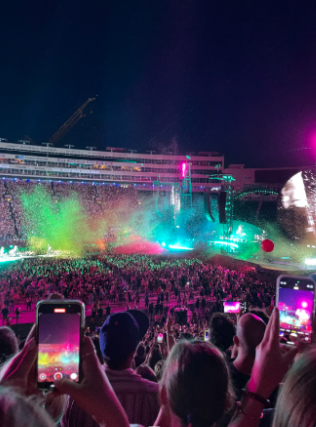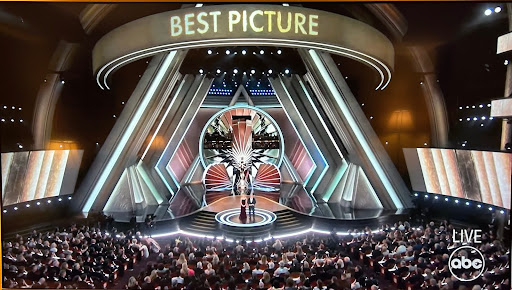
The Apple Vision Pro was released on February 2, 2024 changing the game on virtual reality. It uses the visionOS which is compatible with iOS and other apple software. The screen connected to this headset has 23 million pixels making for a seemingly life-like experience. Connected to the headset are two dual driver audio pods, marketed as Apple’s most advanced Spatial Audio system ever. The apple vision pro also uses eye tracking technology through LEDs and infrared cameras, making it so there is no need for users to have any controllers on hand. They also have hand tracking software that makes it easy to customize your work space. The cameras located on the front of the apparatus transmit billions of pixels per second so even when wearing the headset you can see your surroundings perfectly.
The Apple Vision Pro combines both AR and VR. AR, or augmented reality, overlays the real world with digital elements which enhances the user’s perception of their physical surroundings. This can be achieved not only by AR glasses, but smartphones and tablets. AR has been used in multiple fields, from healthcare to gaming. For example, the popular game Pokémon Go utilizes AR to overlay digital characters in the real world. On the other hand, VR, or virtual reality, completely immerses the user in an artificial environment. VR can simulate real life or an imagined world. It requires special equipment like a VR headset and/or gloves and motion trackers. As it transports the user to a realistic three-dimensional space, VR can be applied in professional settings. For example, it could serve as simulation-based training for high-risk occupations, such as performing surgery or flying a plane. VR simulation-based training provides a safe and controlled environment to practice these skills. With both of these technologies, the Apple Vision Pro seamlessly blends digital overlays and fully immersive digital experiences.
Now that the Apple Vision Pro has been released for a year, it is a perfect time to reflect on the value of the product. When it was initially released, most reactions were positive, praising the quality of the product and its potential. Up to now, reviews have continued to commend the incredibly lifelike AR overlay, and that the design is lightweight and comfortable compared to other VR headsets in the market. However, it does come with a hefty price tag of $3,499. While it is reasonable for such a cutting-edge device to be on the more expensive end, it could also be perceived as overpriced for its early stages. The price might also be limiting its accessibility and preventing it from reaching a wider range of consumers. In summary, the Apple Vision Pro has been well-received by users in its first year of availability but has yet to be widespread due to its cost.
The Apple Vision Pro is undoubtedly a groundbreaking piece of technology. As AR and VR have each been making waves in recent years, the Vision Pro offers both of them at a high quality, revolutionizing digital entertainment. It is a huge step in enhancing AR and VR to hopefully provide remote training. The Apple Vision Pro unlocked new potential for multiple industries, redefining how we interact with technology and what immersive technology could be.








